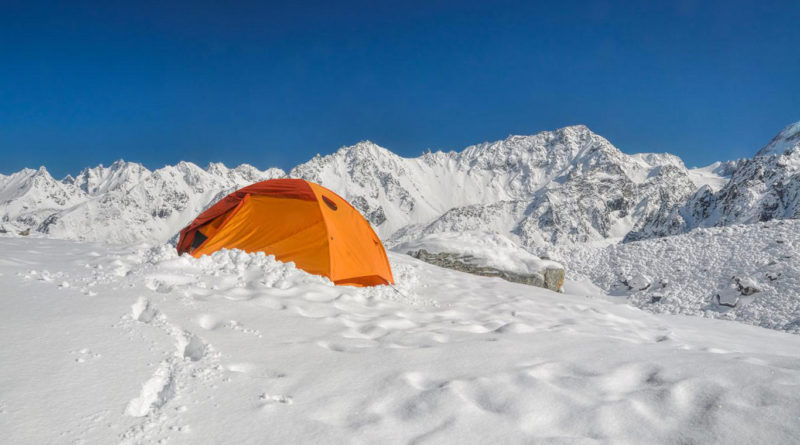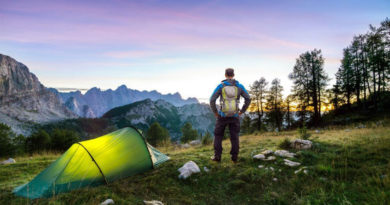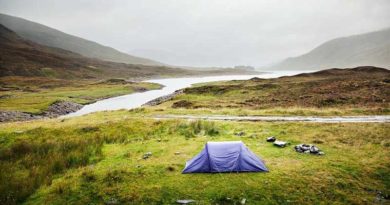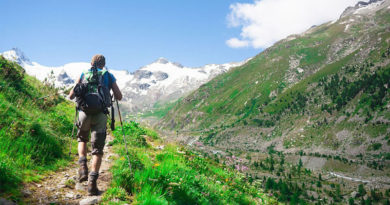Best Budget 4-Season Tents of 2022-23
From mountaineering to casual winter camping with friends, a 4-season tent is the last thing that stands between you and the elements. These tents are much stronger and more reliable than their counterpart 3-season tents. They feature less mesh and a tougher pole structure, which make them an essential piece of gear for any successful winter adventure. It is an ideal choice for those who need a durable tent that they can take everywhere without having to think twice about durability. Usually, 4-season tents are expensive but you don’t need to spend a lot of money on tents. You can get a decent tent at an affordable price and it will get the job done nicely.
So here is the list of top budget-friendly 4-season tents that you can use for your extreme outdoor adventures.
1. REI Co-op Arete ASL 2
Packaged weight: 6 lbs. 5 oz.
Type: Double wall
Floor area: 32.9 sq. ft.
Peak height: 43 in.
REI Co-op Arete ASL 2 is a 3- to 4-season tent, which means it has the lightness of a 3-season tent but has a 4-pole system and a heavier rainfly. This tent can handle light to moderate snow but it’s not built for super-strong winds or heavy snow loads. But the 4-pole design makes this tent very stable and it also offers a generous 43 inches of headroom. It offers around 33 square feet of area and it weighs around 5.6 pounds, which is the minimum trail weight. There is little to no interior mesh and the main tent body provides some good ventilation. There is a nice vestibule and a big door.
One of the good things about Arete ASL 2 is that it can be used for year-round camping trips. The double-wall design, little mesh on the inside, and good ventilation make up a tent that can be used for normal camping and even backpacking without involving the cold. On the plus side, the Arete ASL 2 can hold snow as well. Though Arete ASL 2 is a great option for shoulder season and mild winter camping trips, do not depend on the Arete to be your primary tent on high-altitude or stormy adventures.
What I like: A great value 4-season tent that can be used for year-round camping.
What I don’t like: Small vestibule, only one door, not built for the toughest of weather
2. GeerTop 2-Person Tent

Packaged weight: 6 lbs. 6.4 oz.
Type: Double wall
Floor area: 30 sq. ft.
Peak height: 41 in.
GeerTop 2-Person Tent is a good option for those just getting into winter camping. It’s a basic 4-season tent that is made of reasonably quality materials and it provides a good amount of waterproofness. The tent is easy to set up and you can even set it up in just a few minutes. The fabric provides additional protection against UV rays and the PU 3000mm coating sheds water well. This is a double-wall tent and it offers good weather protection. You can even use the inner layer alone in warm and dry conditions. The outer layer can be added easily for privacy and to keep the wind and inclement weather out.
The GeerTop offers enough room for two campers yet it is small enough to be carried in your backpack. The tent has a freestanding design and it features built-in lantern hook and storage pockets. To increase the airflow and reduce condensation, you can use mesh ventilation panels on the inside of the tent. The zippers are heavy-duty and two-sided, which allows you to open doors easily from both inside and outside. There are nice convenient vestibules that keep your extra gear dry. The ropes have reflectors for increased visibility and they can even be seen in the dark.
What I like: Very affordable, easy to set up and take down, freestanding design
What I don’t like: Cheap materials, zippers are not high-quality, a little heavy
3. Nemo Kunai
Packaged weight: 3 lbs. 15 oz.
Type: Double wall
Floor area: 27.6 sq. ft.
Peak height: 42.2 in.
The Nemo Kunai backpacking tent has mountaineering stability and a convertible tent body for warm weather versatility. The tent is equipped with alpinist-specific technology. Kunai has the technical features you’ll need to face the ever-changing weather of the backcountry while remaining compact enough to travel longer distances. The fly is significantly stronger and reinforced with a silicone treatment for increased durability. The floor is made of 30D ripstop nylon and there’s single-seam construction for greater protection and tent longevity. The reshaped vestibule has more volume in the front and more usable gear storage. The fly is tapered and has a streamlined profile to withstand strong winds, rain, or snow.
The canopy seams at the brow are reinforced with ultra-durable laminated polyester fabric for greater tent rigidity and security in extreme conditions. The Kunai’s thoughtfully engineered frame design, combined with an aggressive brow pole, is designed to provide an incredible amount of headspace for two camping partners. Kunai’s top-tier color-coded pole system is simple to use and relies on incredibly strong, premium Aluminum DAC Featherlite poles for ultralight strength and stability. When you need more protection in a storm, weatherproof hoods allow pass-through guy-outs to secure the inner tent structure directly to the ground. Finally, the Kunai tent, like all NEMO products, comes with a lifetime warranty, ensuring that it will last you for years of adventures.
What I like: Versatile, great value, zip-off walls
What I don’t like: Takes a little more time to set up, not very budge-friendly
See the Nemo Kunai 2P See the Nemo Kunai 3P
4. ALPS Mountaineering Tasmanian 2

Packaged weight: 7 lbs. 7 oz.
Type: Double wall
Floor area: 34.5 sq. ft.
Peak height: 46 in.
ALPS Mountaineering Tasmanian is the cheapest 4-season tent available on the market. It is an option worth considering if your main goal is winter camping. However, this tent performs reasonably well in all four seasons and it is a great option to consider if you are on a tight budget and need one tent for year-round use. Although you can’t take it on a backpacking trip due to its weight, it’s a type of tent for trips where most people will take their 4-season tent. The weather protection is really good and even better than most options in this price range.
The tent has a freestanding design that features hubbed 7000 series aluminum poles. The shock cords are waterproof and the overall assembly of the tent is straightforward. The rainfly protects against UV damage and stays taut all day long. There are vents that you can open or close according to weather conditions. Two nice doors offer easy entry and exit. Additionally, the tent features two zippered mesh windows and two vestibules where you can store your extra gear. The tent weighs around 7.5 pounds, which is not too heavy for a double-wall tent. It features 34.5 square feet of floor area and has a longer shape, which is good for taller folks.
What I like: Two nice hooped vestibules and the tent handles heavy snow loads well
What I don’t like: Poor performance in heavy winds, the doors are small, comparatively less headroom
See the Tasmanian 2 See the Tasmanian 3
5. Black Diamond Firstlight
Packaged weight: 3 lbs. 6 oz.
Type: Single wall
Floor area: 27.3 sq. ft.
Peak height: 42 in.
Black Diamond Firstlight is a great option for multi-day ski touring and alpine climbing as long as the weather is not too bad. The tent is suitable for trips where low weight and packed size are critical. It packs down to the size of a Nalgene bottle (excluding the poles), which makes it a good choice for alpine climbing, multi-day ski touring, or any trips where you can’t carry heavy loads. The tent performs best in dry or below-freezing temperatures but it’s not ideal in the rain. The Firstlight is one of the lightest and most packable tents on this list but keep in mind that it’s also the only tent on the list which is not completely waterproof.
This is a single-wall tent and it uses Black Diamond’s proprietary NanoShield single-wall fabric. This fabric is highly water-resistant but it’s not waterproof. It can handle some light rainstorms but not heavy rain or wet snow. In exceeded thunderstorms, you may experience dripping on the inside. In the worst condition, the walls of the tent will become saturated and anything that touches them will get wet. However, this tent can perform well in dry conditions where the temperature is well below freezing. Dry snow does not saturate the fabric as quickly. In mild conditions, the fabric provides good breathability than others and it does handle moderate winds well so you can expect a good performance in moderate weather conditions.
What I like: Super lightweight and packable, comes with a bug net
What I don’t like: Below average weather performance, not waterproof, small interior
See the Black Diamond Firstlight
6. MSR Access 3
Packaged weight: 5 lbs. 1 oz.
Type: Double wall
Floor area: 41 sq. ft.
Peak height: 47 in.
If you are looking for an affordable option for mountaineering, ski touring, or some occasional backpacking, MSR Access is a great choice. It comes with carbon fiber poles and the inner and outer can be pitched separately. This is one of the easiest tents to pitch especially for a double-wall model. The poles slip into metal eyelets and it’s held by plastic buckles. These plastic buckles are easy to use and faster than pole sleeves. Once you assemble the tent, you can easily clip the rainfly, which utilizes the same plastic buckles as the poles. The overall setup is simple and very effective.
The Access tent from MSR can handle moderate winds and some snow loading. However, the tent does not perform well in heavy snow and winds but the wet weather performance is above-average, thanks to its double wall and interior fabric. The MSR Access 2P weighs around 4 pounds when packed and the package size is also impressive. It packs down to a size of 6 x 18 inches. Overall, the Access 2P is a unique all-season shelter that fits the needs of a large group of users. It isn’t the strongest option out there but it’s something that you can take where a lightweight and small pack size is required.
What I like: Lightweight yet durable, waterproof, versatile, easy to pitch
What I don’t like: Not as strong as some other 4-season options, expensive
See the MSR Access 2 See the MSR Access 3
7. MSR Advance Pro

Packaged weight: 3 lbs. 3 oz.
Type: Single wall
Floor area: 24 sq. ft.
Peak height: 44 in.
The Advance Pro is yet another packable tent from MSR that will keep you safe and protected at night without weighing you down during the day. This tent is super lightweight yet it performs well in moderate to strong winds. However, the tent does not feature a bug net door and provides poor breathability in damp conditions or at lower elevations. The interior space is also small, which is only 24 square feet. The overall design of the tent is a minimal-weight-focused design that does not feature extra features such as a mesh bug net door.
The MSR Advance Pro is a bivy-style tent that is easy to set up. Unlike a 3-pole design, you don’t have to set it up. You can simply unfold the pre-attached poles, slide each pole into the pole sleeve, and clip plastic tabs to hold the pole in place. This setup is easy and very quick. When it comes to durability, the Advance Pro provides a good score. All of the components are solid and feel sturdy. However, when you go lightweight, you scarify some durability. Since this tent is fairly lightweight, you scarify on long-term wear. So this tent may not last as long as some of the sturdiest 4-season tents.
What I like: Lightweight and compact, waterproof, easy to pitch
What I don’t like: No bug net door, below-average breathability, small interior space
8. Big Agnes Copper Spur HV3 Expedition
Packaged weight: 6 lbs. 7 oz.
Type: Single wall
Floor area: 41 sq. ft.
Peak height: 41 in.
The Big Agnes Copper Spur HV3 Expedition is a classic award-winning tent. The reinforced design withstands 4-season use. The High Volume or HV structure gives elbow room inside and the modularity means you can open windows and vents for breathability on mild nights or batten everything down in bad weather and feel confident in this reliable shelter.
The setup is easy and I’d recommend staking out all four corners into the ground first. The poles are color-coded so match the gray poles to the gray webbing. The tent sets up fast with the external clips and the rainfly is also color-coded. The inside of the fly has Velcro tabs that can be secured to the poles and the guy lines should be staked out too for the most secure setup.
The two big vestibules under the fly provide plenty of space for backpacks, extra gear, and boots. There’s a fly vent up high to prevent condensation and a guy-out point down low on the fly to provide airflow. The dual equalized guidelines are designed to tension the fly perfectly for stability and high winds. The lines are even made of Dyneema, an incredibly strong material for the weight.
Big Agnes went the extra mile to make it easier to set up and use this ten in winter conditions with features like oversized glove-friendly zipper poles and buckles. The quick stash door on the tent body and the oversized reinforced stake-out loops are convenient. If you’re camping in snow you can use skis, ice, axes, or poles in place of stakes.
The tent body and floor are made of high-tenacity fabrics with excellent tear strength and water resistance to anticipate those challenging winter conditions. The poles have a four-way high-volume hub design partnered with the sturdy pole architecture so you have a strong structure for wind and snow load capacity. Big Agnes achieves incredible interior volume with the pre-bends in the poles. This design adds a ton of elbow room and that’s why High Volume is part of the name.
Weather conditions are unpredictable so Big Agnes made this tent with a lot of possible configurations. There’s mesh built into the body but it’s mostly constructed of breathable nylon to give an extra layer of protection. You have two doors that can be opened wide. On each door, there’s a window you can unzip for ventilation along with another one in the ceiling that matches up with a fly vent. There’s a media pocket that’s perfect for routing charging cords or earbuds and other interior storage for getting gear up off of the floor.
All the seams on the floor and fly are sealed with waterproof solvent-free polyurethane tape. To protect the floor even more I would recommend investing in the custom fit footprint, which is sold separately. With a total weight of around 6.5 pounds, this is a packable, reliable, and roomy shelter for three campers.
What I like: Lightweight, spacious, handles snow, rain, and wind well
What I don’t like: Average durability, not the cheapest option
See the Big Agnes Copper Spur HV3 Expedition
Best Budget 4-Season Tents: Comparison Table
| TENT | WEIGHT | TYPE | FLOOR AREA | PEAK HEIGHT |
|---|---|---|---|---|
| REI Co-op Arete ASL 2 | 6 lbs. 5 oz. | Double wall | 32.9 sq. ft. | 43 in. |
| GeerTop 2-Person Tent | 6 lbs. 6.4 oz. | Double wall | 30 sq. ft. | 41 in. |
| Nemo Kunai | 3 lbs. 15 oz. | Double wall | 27.6 sq. ft. | 42.2 in. |
| ALPS Tasmanian 2 | 7 lbs. 7 oz. | Double wall | 34.5 sq. ft. | 46 in. |
| Black Diamond Firstlight | 3 lbs. 6 oz. | Single wall | 27.3 sq. ft. | 42 in. |
| MSR Access 3 | 5 lbs. 1 oz. | Double wall | 41 sq. ft. | 47 in. |
| MSR Advance Pro | 3 lbs. 3 oz. | Single wall | 24 sq. ft. | 44 in. |
| BA Copper Spur HV3 Expedition | 6 lbs. 7 oz. | Single wall | 41 sq. ft. | 41 in. |
How to Choose the Right 4-Season Tent?
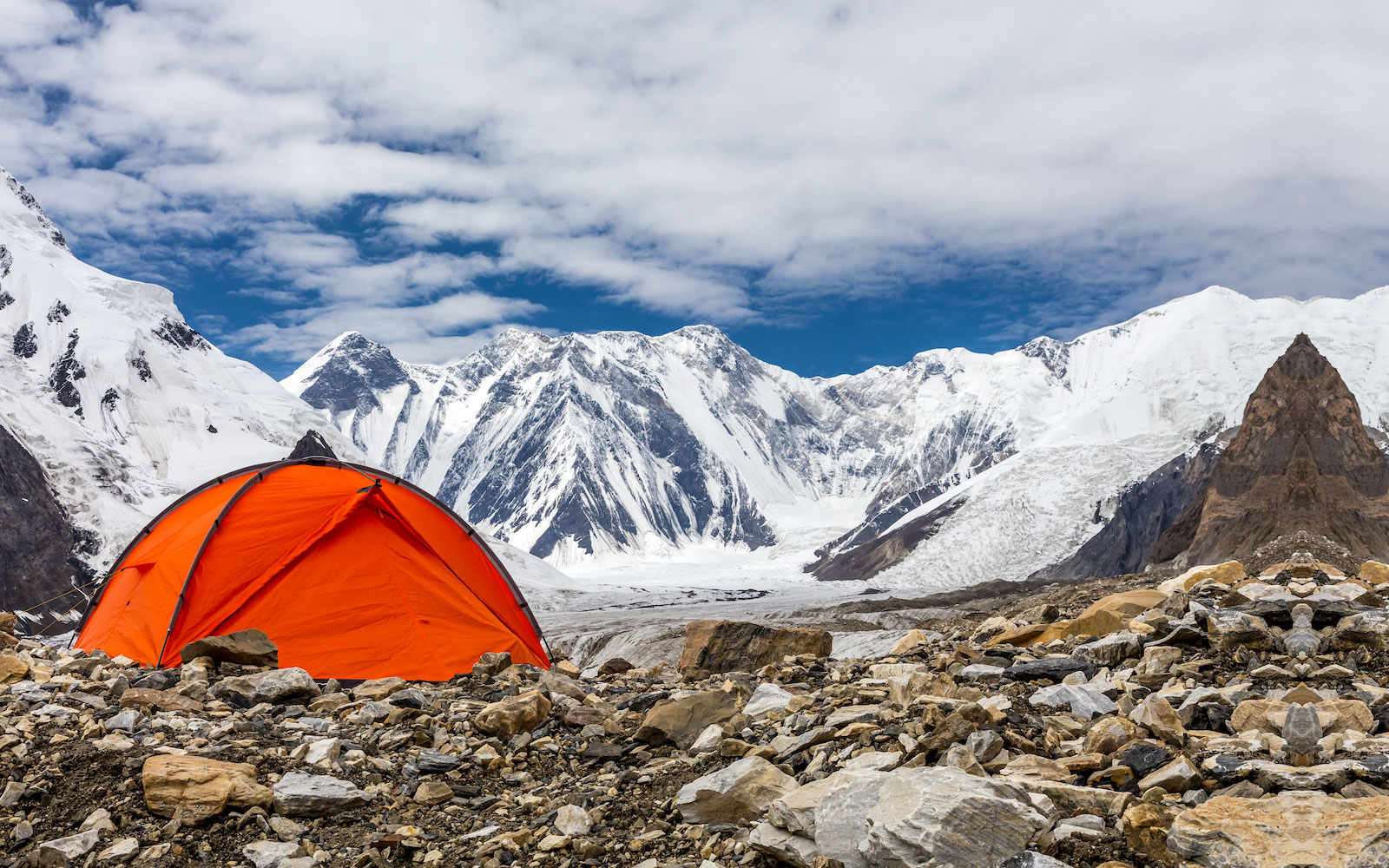
A 4-season tent keeps you safe and protected in weather conditions like heavy snow, wind, and other similar harsh conditions. In the below section, I am going to deep dive in and look at key features of a true 4-season tent, one that’s best for you. At the same time, I want to help you avoid making a purchasing decision based on the bogus claims that some websites make.
Outer Fly Fabric
To help protect you during harsh weather while you’re in your tent, you want a strong outer fly fabric made from a tough 30 to 40 denier thick silicon-coated material. Avoid tents that have large sections of the outer fabric that aren’t strongly supported by a pole or guy lines.
Floor Material
On the floor, you want a strong and water-tight 70 to 100 denier thick nylon fabric, which will do the trick.
Poles
Since the skeleton of your tent is made from the poles you have, I suggest you want to have a strong 9 to 10 millimeter in diameter pole made of aluminum. Stay away from cheap carbon fiber poles as they will shatter in the cold. Supporting the poles should be a good number of well-positioned guy lines to help stop the poles from collapsing inwards.
Design
When it comes to the type of design of the tent, there are two types; one is a tunnel and a dome tent. When pitched properly a tunnel tent is very strong. I’ve been out in it and it held up extremely well. However, for several reasons, my pick is a dome tent. A dome structure allows a tent to have poles that have multiple crossover points. The most classic pole design, has seven intersection points, three on the sides, which provides good protection against heavy wind, and one on the top, which provides good protection against heavy snow loads.
One other advantage of a dome tent is that it performs better in changing wind conditions. The freestanding design is also good if you want to pick it up and move it around a bit. Also, having a tent that’s got sharper angled walls can be very helpful especially when it’s snowing. Even though the snow can fall on it, it will generally fall off a lot easier and a lot quicker.
Ease of Pitching
A topic that’s not often talked about by reviewers or considered by purchasers of a 4-season tent is how easily a tent is pitched. When the weather is bad, the temperature drops, it’s freezing, it’s windy, the tent is flapping around like crazy and you’ve got thicker gloves on trying to work with small plastic clips.
Speed and ease are essential that’s why I am a great proponent of what’s called a multi-pitch tent where the inner and the outer are joined together and go up as one.
A friend of mine had a well-known 4-season expedition tent that had the fly separate to the inner of the tent and it literally took him no less than 50 separate things that he needed to do to fully set up his tent. Now when the weather is crazy, that’s the last thing that you want to have to do.
Ventilation
In winter, snow can easily build up around the base of your tent, which is generally one of the points from which you draw air. So, you must have a tent that has good ventilation points on the top half of the tent that you’re looking at.
Interior Space
During winter camping or backpacking, you’ll be carrying a lot more gear and a lot of snow-related equipment, which is generally bulkier. So, having good internal sleeping and vestibule space is important. Many people like an extended vestibule, which they dig out to allow them to comfortably sit in and cook in. Also, having two entrance points and a 2- or more-person tent is very helpful.
Additional Features
Based on some infield experience, I’d like to give you some extra tips that will make your trip a lot safer and more comfortable.
When it’s windy, it can be very noisy and one thing that can help reduce that just by a bit is having what we call no rattle zips. You can also tape up the ends so the metal does not rub against one another or you can take off the metal pulley and replace it with a cord such as what you might have on a guy line.
One thing that will stop cold wind from coming into your tent and also spindrift getting into your tent is having it pitched where the outer goes right down to the ground or having snow flaps or a skirt around areas of the base of your tent.
A good amount of pockets in the tent is helpful, especially for putting your gear into it. Also, a double-skinned internal door so that you can regulate through a zip how much mesh or ventilation you want or don’t want.
Lastly, the color of your tent can make a big difference. You will notice that a lot of four-season tents are a bright color so they can be easily seen in harsh weather.
Weight vs. Features
Now you’re probably thinking, with all these features, this tent is going to be super heavy but you want something light and strong. Let me tell you that when you’ve got a 3-season tent, your focus is on the light weight. But when you’ve got a four-season tent, however, your focus is on strength. So, you have the option to choose either lightweight or strong.

